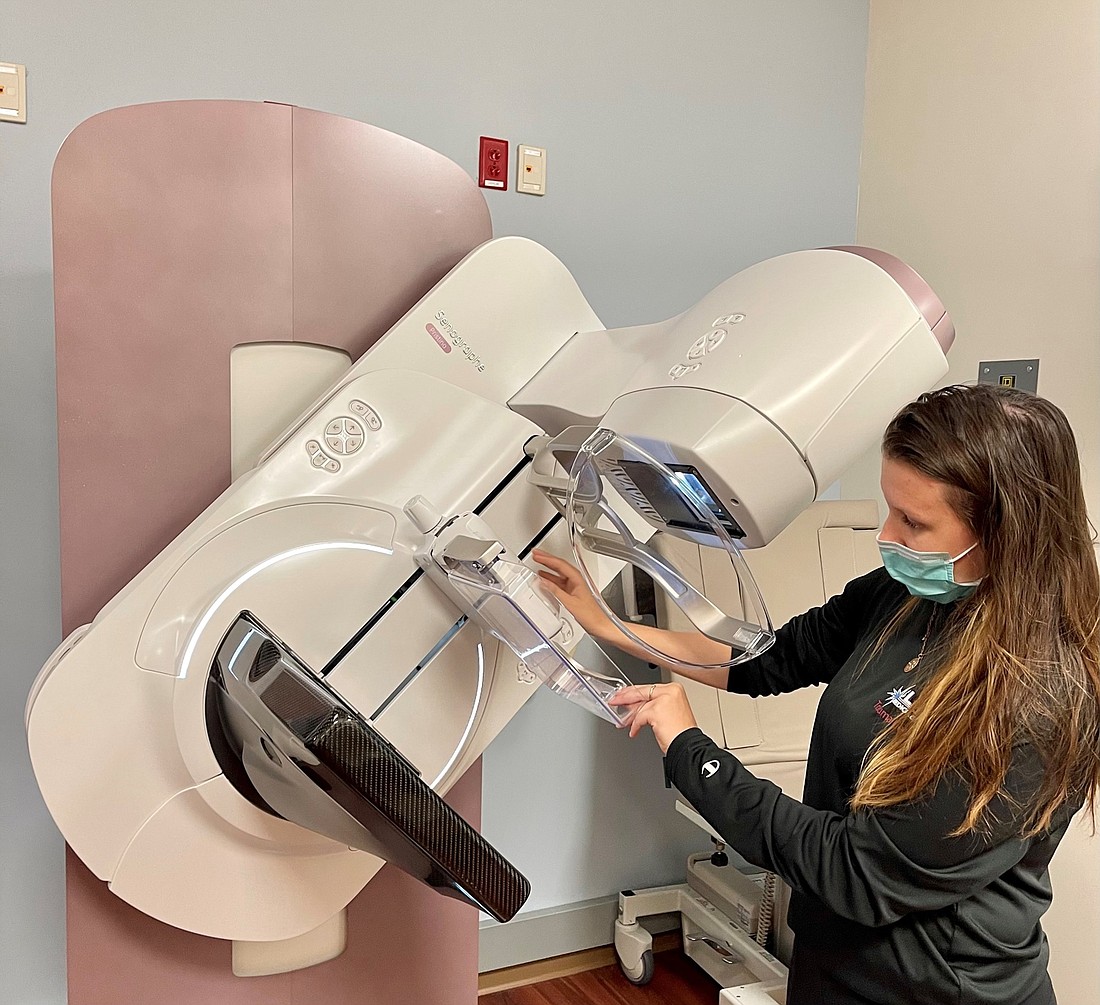- November 21, 2024
-
-
Loading

Loading

Blake Medical Center’s chief of radiology was pleased when he found out last year that the hospital would start using advanced 3D mammogram technology.
Dr. Philip Blaustein said Blake doctors began using GE’s Senographe Pristina 3D Mammography System in October 2020.
“I thought it was going to be really wonderful to move from the technology we had been using before to this, but it’s been even better than I thought it was going to be,” Blaustein said. “I literally had no idea how excellent this system was going to be, and it’s really been honestly a revelation.”
Blaustein said Blake’s technology is unique to Manatee and Sarasota counties because it includes components that work with the machinery to provide specialized imaging services, such as contrast-enhanced spectral mammography, which helps with the diagnosis and staging of breast cancer.
“To take full advantage of the full capabilities of what this system offered, it really took an additional two or three months of training for our staff to be fully up to speed on all the capabilities the system has,” Blaustein said.
The Senographe Pristina 3D Mammography System also allows women to control the compression used by the machinery during screenings.
“The patient herself can actually adjust the amount of compression herself to try and have a personal role, self-compressing, and there seem to be a certain population of women that feel more comfortable doing it themselves and will push it beyond what the technologists otherwise would, and so we get even better pictures that way,” Blaustein said.
Mammograms are low-dose X-rays of the breast. Regular mammograms can help find breast cancer at an early stage when treatment is most successful.
“The goal here to me is, again, to try and make the diagnosis as early as possible when the lesion is as small as possible, so that the likelihood that it spreads to lymph nodes or other parts of the body is very, very low, and the likelihood of cure is higher,” Blaustein said.
A study of 549,091 women conducted by the Radiological Society of North America found regular mammography screening substantially reduces the risk of dying from breast cancer. Researchers found women who skip even one scheduled mammography screening before a breast cancer diagnosis face a significantly higher risk of dying from the cancer.
An estimated 35% of Americans missed routine cancer screening due to COVID-19-related fears and service disruptions early in the pandemic, according to the Prevent Cancer Foundation.
In the U.S. this year, the American Cancer Society estimated there will be 381,550 new cases of invasive breast cancer diagnosed in women and 43,600 deaths.
The ACS recommends women at average risk for breast cancer — no personal history of breast cancer, strong family history of breast cancer or genetic mutation known to increase the risk of breast cancer — can begin annual mammogram screenings at age 40 and should begin the screenings at age 45. Upon turning 55 years old, the ACS says women can continue annual screenings or get them every other year.